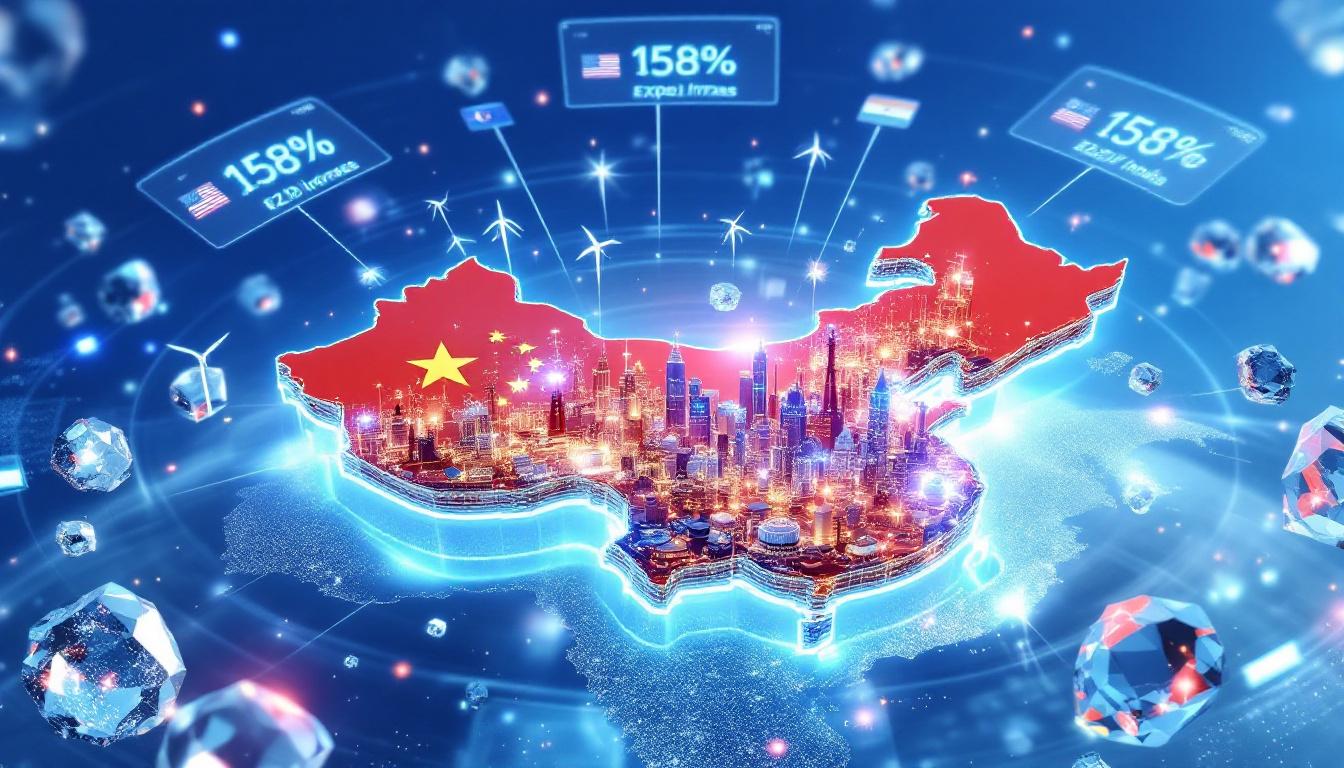What Were the Key Takeaways from the 2025 Lithium Supply and Battery Raw Materials Conference?
Understanding the Current Lithium Market Dynamics
The lithium market finds itself at a critical juncture as industry leaders gathered at the 2025 lithium supply and battery raw materials conference to assess the challenges of persistent oversupply and weakening demand. The discussions revealed a market struggling to find equilibrium amid significant inventory buildup and pricing pressures.
How Oversupply is Reshaping the Industry
Global lithium prices have plummeted to four-year lows as of mid-2025, creating significant headwinds for producers across the value chain. The market is grappling with substantial inventory accumulation, particularly in China, where port stockpiles have reached approximately 400,000 tonnes of spodumene concentrate.
"It could take over six months to burn through the inventories," noted one conference delegate, highlighting the extended timeline for market rebalancing. This pessimistic outlook stems from continued production increases despite clear oversupply signals.
The situation is further complicated by new supply still entering the market from Australian and African mining operations, alongside Argentina lithium brine insights in South America. These capacity additions come at a particularly challenging time when demand has failed to keep pace with production growth.
Industry analysts point to the structural challenges of mining project development timelines, where decisions made during the high-price environment of 2022-2023 are resulting in new capacity coming online during a period of market weakness. The disconnect between project planning cycles and market conditions has exacerbated the supply-demand imbalance.
Why EV Adoption Rates Are Affecting Market Sentiment
Electric vehicle sales growth has fallen significantly below projections in key markets, particularly in Europe and the United States. This slower-than-anticipated adoption curve has direct implications for lithium demand forecasts.
Market participants noted that consumer hesitation around EV purchases stems from multiple factors, including charging infrastructure gaps, price premiums over internal combustion vehicles, and economic uncertainty in major markets. These headwinds have dampened the expected exponential growth in battery material demand.
The situation varies by region, with Chinese EV sales showing greater resilience compared to Western markets. This regional disparity creates additional challenges for producers attempting to calibrate production plans against fragmented global demand patterns.
Despite near-term pessimism, most conference participants expressed confidence in long-term market fundamentals. The consensus view holds that current conditions represent a cyclical downturn rather than a structural shift away from electrification, though the timeline for recovery remains uncertain.
How Are Funding Challenges Impacting the Battery Supply Chain?
Why Capital Access Has Become a Critical Bottleneck
The financial landscape for battery materials companies has deteriorated significantly, with junior mining companies reporting acute difficulties securing project financing. "Lithium is just no longer attractive for investors," remarked one industry participant, highlighting the dramatic shift in market sentiment.
Private investors have demonstrated increased risk aversion toward the sector, while public markets remain cool toward battery metals investment companies. This challenging capital environment has created a bifurcated market where well-capitalized incumbents can weather the downturn while emerging players struggle to advance projects.
The funding crunch is particularly severe for non-integrated operations and companies reliant on third-party offtake arrangements. Without vertical integration or strategic partnerships to provide financial security, these ventures face existential challenges in the current environment.
Companies that secured funding during the market peak find themselves in stronger positions, though many are reevaluating capital expenditure plans and project timelines. Strategic capital raising strategies have emerged as critical lifelines for projects seeking to maintain momentum.
Which Policy Initiatives Are Proving Effective?
Government efforts to catalyze domestic battery supply chains have shown mixed results. The European Critical Raw Materials Act (CRMA) drew particular criticism from conference participants for lacking enforceable targets, direct financial incentives, and clear funding pathways for designated projects.
"In some ways, it is just a label, it doesn't guarantee anything — but it's better to have the label than not," observed one delegate regarding the CRMA's strategic project designations. This sentiment reflects broader industry frustration with policy frameworks that fail to address the capital intensity of battery supply chain development.
Companies with robust balance sheets or strategic partnerships continue expansion despite challenging market conditions, but policy support has proven insufficient to maintain momentum across the broader project pipeline. This gap between policy objectives and market realities threatens to undermine supply chain regionalization efforts.
The conference highlighted the need for more targeted government interventions, particularly to address midstream processing bottlenecks. Current policy approaches often favor upstream mining or downstream manufacturing without adequately addressing the critical conversion and processing steps required for a complete supply chain.
What's Driving the Shift from Independence to Interdependence?
How China's Role in the Supply Chain is Evolving
A notable shift in strategic thinking emerged at the conference, with Western nations reassessing their pursuit of complete supply chain independence from China. Industry leaders increasingly recognize China's continued dominance in processing and manufacturing efficiency, built through years of focused investment and scale advantages.
Chinese firms maintain significant advantages in scale, cost-efficiency, and vertical integration that Western competitors have struggled to match. Rather than competing directly on these terms, many Western companies are studying Chinese deployment strategies to accelerate their own project execution.
Growing interest in knowledge-sharing and technology transfer initiatives with Chinese firms represents a pragmatic acknowledgment of interdependence. This approach balances competitive concerns with the practical realities of supply chain development timelines and capital requirements.
Policy responses in the US and EU have evolved to focus on reducing dependencies in critical areas while maintaining necessary trade relationships. This nuanced approach recognizes that complete decoupling is neither practical nor economically viable in the near term.
Why Midstream Processing Remains a Strategic Vulnerability
The conference highlighted midstream processing capacity as a particular vulnerability in Western supply chains. The US battery ecosystem faces disproportionate challenges due to underdeveloped cathode and anode material processing capabilities, despite significant investments in mining projects and cell manufacturing facilities.
This imbalanced development creates a "missing middle" in domestic supply chains, where raw materials must still be exported for processing before returning as battery components. The resulting inefficiencies undermine the security benefits of domestic mining and manufacturing investments.
National security concerns are driving calls for policy adjustments to attract midstream investments, with experts emphasizing the strategic importance of closing processing capability gaps. Without addressing these bottlenecks, regionalization efforts will deliver incomplete supply chains that remain vulnerable to disruption.
Industry participants advocated for more targeted incentives to address specific supply chain weaknesses, noting that current policy frameworks often fail to recognize the distinct challenges of midstream processing development compared to mining or manufacturing.
What Challenges Are Battery Recyclers Facing in 2025?
How Market Conditions Are Affecting Recycling Economics
Battery recycling operations face a perfect storm of challenges in the current market environment. End-of-life (EOL) battery volumes have fallen significantly below projections due to slower EV adoption, creating feedstock shortages for recycling facilities designed for higher throughput.
Compressed margins resulting from low metals prices have further complicated the economics for black mass producers, undermining the financial viability of recycling operations. This price pressure comes at a particularly challenging time as many recyclers are scaling up capacity in anticipation of future volume growth.
Domestic refining capacity limitations in Western markets create additional bottlenecks, forcing some recyclers to seek international processing partners. This dependency introduces regulatory complexities and logistics costs that further erode margins.
Recycling operators are responding by diversifying feedstock sources beyond end-of-life batteries, with particular emphasis on manufacturing scrap partnerships. This adaptation provides more predictable material flows while the market awaits increased EOL volumes from aging EV fleets.
Which Regulatory Uncertainties Are Hampering Growth?
The US policy landscape creates additional complexity for recycling operations, with questions surrounding Inflation Reduction Act implementation affecting investment decisions. Uncertainty regarding domestic content requirements and qualifying criteria has complicated long-term planning for recycling facilities.
Export regulations present challenges for companies without domestic refining partners, creating potential market access barriers for black mass producers. These restrictions aim to build domestic capacity but create near-term operational challenges for existing recyclers.
Industry perspectives remain divided on whether China might reopen to black mass imports, adding another layer of uncertainty to market development. This policy question has significant implications for global recycling economics and material flows.
Conference participants emphasized the need for regulatory clarity and policy stability to support continued investment in battery recycling breakthrough technologies. The current environment of policy uncertainty compounds the economic challenges created by low metal prices and feedstock constraints.
How Can Companies Navigate the Current Market Environment?
Strategic Approaches for Different Value Chain Participants
Mining companies face particular challenges in the current price environment but can implement several strategic approaches to weather the downturn. Conference participants highlighted operational efficiency improvements, strategic partnerships, phased development approaches, and vertical integration opportunities as key strategies.
For mining operations, focusing on cost structure optimization has become paramount. Leading producers are implementing Australia lithium innovations to reduce energy consumption, improve recovery rates, and increase operational flexibility. These efforts aim to lower break-even points and maintain cash flow during extended periods of low prices.
Midstream processors were advised to highlight their strategic importance when seeking government support, emphasizing national security implications of processing capabilities. Co-location opportunities with upstream or downstream partners offer potential synergies, while flexible sourcing strategies can help manage supply volatility.
Recycling operators face distinct challenges requiring tailored approaches. Diversifying feedstock sources beyond end-of-life batteries, particularly through manufacturing scrap partnerships, provides near-term volume security. Developing scalable processes that operate efficiently at various throughput levels offers flexibility during the market's development phase, while strategic partnerships can bridge financing gaps.
Market Outlook and Recovery Scenarios
Looking ahead, conference participants projected continued price pressure through at least late 2025, with gradual inventory reduction expected as high-cost producers curtail output. Project delays and cancellations may rebalance the medium-term supply outlook, though the funding environment will likely remain challenging for early-stage projects.
The consensus view holds that structural demand growth for battery materials remains intact despite near-term challenges. Policy support for electrification continues across major markets, providing a foundation for eventual market recovery as inventory levels normalize and demand growth resumes.
Supply chain regionalization efforts are expected to progress but at a slower pace than initially projected. The interdependence with China will likely remain a feature of the market for the foreseeable future, even as Western nations develop greater domestic capabilities across the value chain.
Companies with strong balance sheets, strategic partnerships, and operational flexibility stand the best chance of not only surviving the current downturn but emerging in stronger competitive positions. For investors, the market correction may create selective opportunities in well-positioned companies trading at significant discounts to long-term value.
According to Fastmarkets Lithium Supply and Battery Raw Materials Conference, industry experts are predicting a gradual recovery in the lithium market beginning in late 2025, contingent upon production discipline and accelerated EV adoption in key markets.
Table: Regional Battery Supply Chain Development Comparison
| Region | Mining Capacity | Processing Strength | Manufacturing Scale | Policy Support | Funding Environment |
|---|---|---|---|---|---|
| China | High | Dominant | Leading | Comprehensive | Strong |
| Europe | Limited | Developing | Growing | Framework-focused | Challenging |
| North America | Growing | Weak | Expanding | Incentive-based | Selective |
| Australia | Abundant | Minimal | Limited | Export-oriented | Project-specific |
| South America | Significant | Limited | Minimal | Variable | Partnership-dependent |
Table: Key Lithium Market Indicators (2025)
| Indicator | Current Status | Trend | Impact on Market |
|---|---|---|---|
| Price Levels | 4-year lows | Stabilizing | Continued pressure on margins |
| Port Inventories | ~400,000t spodumene | Slowly declining | Delayed price recovery |
| Project Pipeline | Robust | Slowing | Future supply rationalization |
| EV Adoption | Below projections | Gradually improving | Delayed demand recovery |
| Funding Availability | Constrained | Selective | Project delays and consolidation |
FAQ: Critical Questions About the Battery Materials Market
What factors will determine when lithium prices recover?
The timeline for lithium price recovery depends on several interconnected factors. Supply discipline among major producers will be crucial, as voluntary production curtailments could accelerate inventory reduction. Additionally, EV adoption acceleration—particularly in Europe and North America—would strengthen demand fundamentals.
Inventory reduction timelines suggest at least six months before significant price improvement, assuming no further deterioration in market conditions. The effectiveness of government policies supporting electrification will influence the demand recovery trajectory, as will the development of new applications beyond EVs that consume battery materials.
Industry participants should monitor announcements of production curtailments, changes in EV subsidy programs, and inventory level reports as leading indicators of market rebalancing.
How are recycling operations adapting to current challenges?
Recycling companies are implementing multifaceted strategies to navigate current market conditions. Feedstock diversification has become a priority, with many operators establishing partnerships with battery and EV manufacturers to secure manufacturing scrap as a supplement to limited end-of-life volumes.
Operational efficiency improvements help maintain viability despite compressed margins, with technological innovations focusing on higher recovery rates and lower processing costs. Strategic partnerships across the value chain provide financial stability and market access, particularly important for recyclers without integrated refining capabilities.
Technology innovation has accelerated in response to economic pressures, with process improvements targeting higher-value recovery of critical materials and reduced energy consumption. Policy advocacy efforts focus on creating regulatory frameworks that recognize recycling's strategic importance to supply chain security and sustainability goals.
Which regions are making the most progress in supply chain development?
China maintains its leadership position in battery supply chain development, with unmatched integration across mining, processing, and manufacturing. Their comprehensive policy support and strong funding environment continue to reinforce this advantage, though growth has moderated compared to previous years.
Europe has established ambitious policy frameworks through initiatives like the Critical Raw Materials Act but faces implementation challenges and a difficult funding environment. Progress has been strongest in manufacturing, with limited development in domestic mining and processing capacity.
North America shows growing mining capacity and expanding manufacturing but remains weak in the critical midstream processing segment. The region's incentive-based approach has attracted significant investment announcements but faces challenges in translating these into operational assets, particularly in processing.
Australia maintains abundant mining capacity but minimal downstream integration, continuing its traditional role as a resource exporter rather than value-added processor. South America's significant lithium resources remain predominantly export-oriented with limited domestic value addition.
The Lithium Supply and Battery Raw Materials Conference highlighted that regional supply chain development continues to evolve with different strengths and challenges across major markets.
What funding structures are proving successful in the current environment?
Strategic partnership models with OEMs or established battery manufacturers provide the most reliable funding pathway in the current environment. These arrangements often include offtake agreements with pricing floors, direct investment, and technical collaboration.
Government support programs show varying effectiveness, with direct loans or loan guarantees generally providing more tangible benefits than tax incentives or grant programs. The most successful projects leverage multiple support mechanisms rather than relying on a single funding source.
Alternative financing arrangements gaining traction include streaming deals, royalty structures, and equipment financing packages that reduce upfront capital requirements. Vertical integration advantages have become more pronounced, with companies able to capture value across multiple steps in the supply chain demonstrating greater resilience to price volatility.
Risk-sharing approaches between suppliers, customers, and financial institutions are emerging as pragmatic solutions to the challenging funding environment. These structured arrangements distribute risk more evenly across stakeholders while maintaining project momentum.
When might the market return to balance?
Expert timeline projections suggest market rebalancing could begin in late 2025 to early 2026, assuming current production trends and demand growth rates. Key milestones to monitor include inventory reductions at Chinese ports, project postponement announcements, and EV sales acceleration in major markets.
Production discipline scenarios vary widely, with some conference participants suggesting that major producers may announce voluntary curtailments if prices remain at current levels through Q3 2025. These adjustments would accelerate inventory reduction and potentially bring forward price recovery.
Demand acceleration possibilities exist through policy interventions, particularly in Europe and North America, where EV adoption has lagged expectations. New battery applications in grid storage and industrial equipment could provide additional demand sources beyond the transportation sector.
Inventory reduction trajectories indicate that meaningful price improvement likely requires port stocks to decline by at least 50% from current levels. The pace of this reduction will be the most direct indicator of market rebalancing progress in the coming months.
Interested in Capitalising on the Next Major Lithium Discovery?
Stay ahead of the market with Discovery Alert's proprietary Discovery IQ model, which delivers real-time notifications on significant ASX mineral discoveries across lithium and 30+ other commodities. Visit our discoveries page to understand how early identification of major mineral finds can generate substantial returns for investors.




